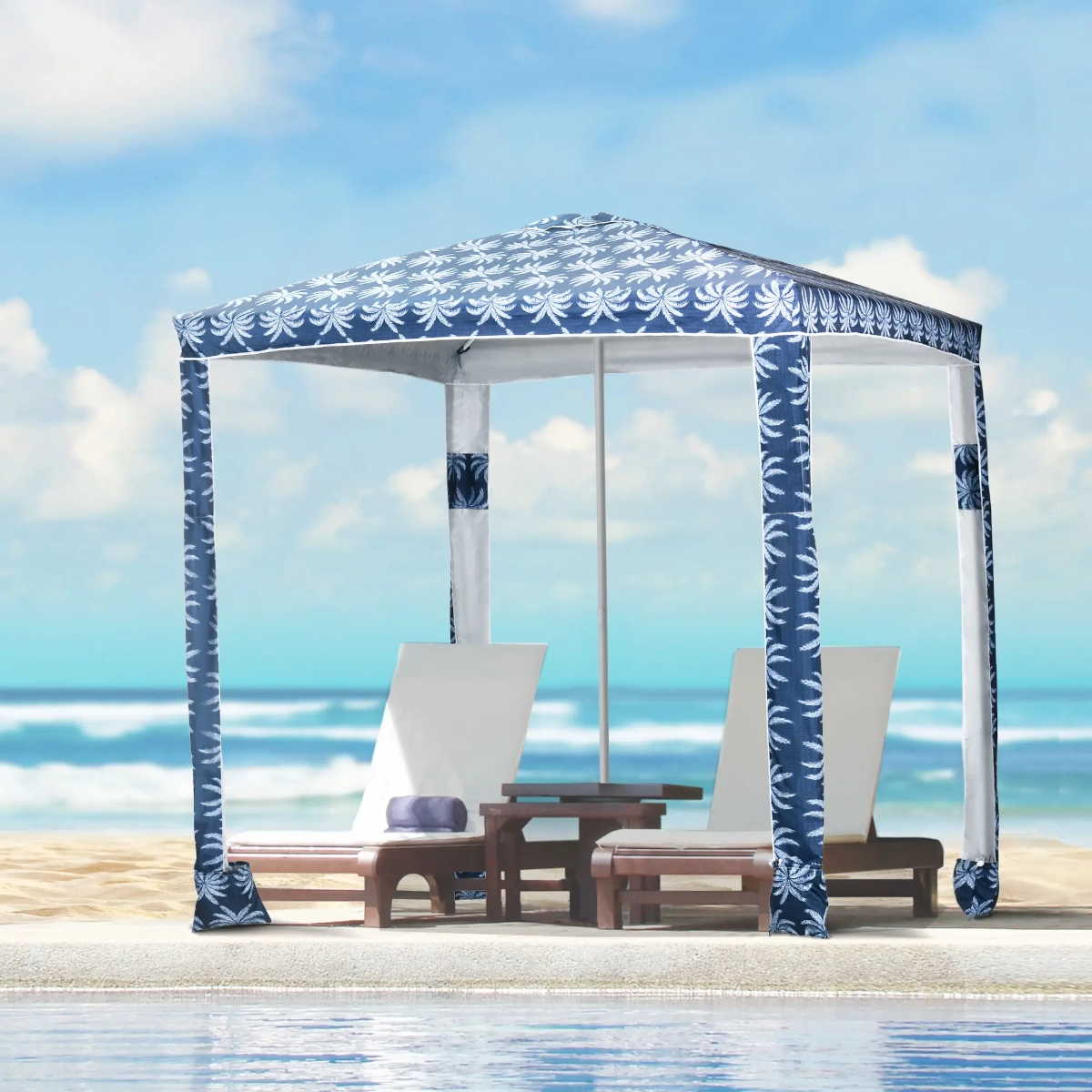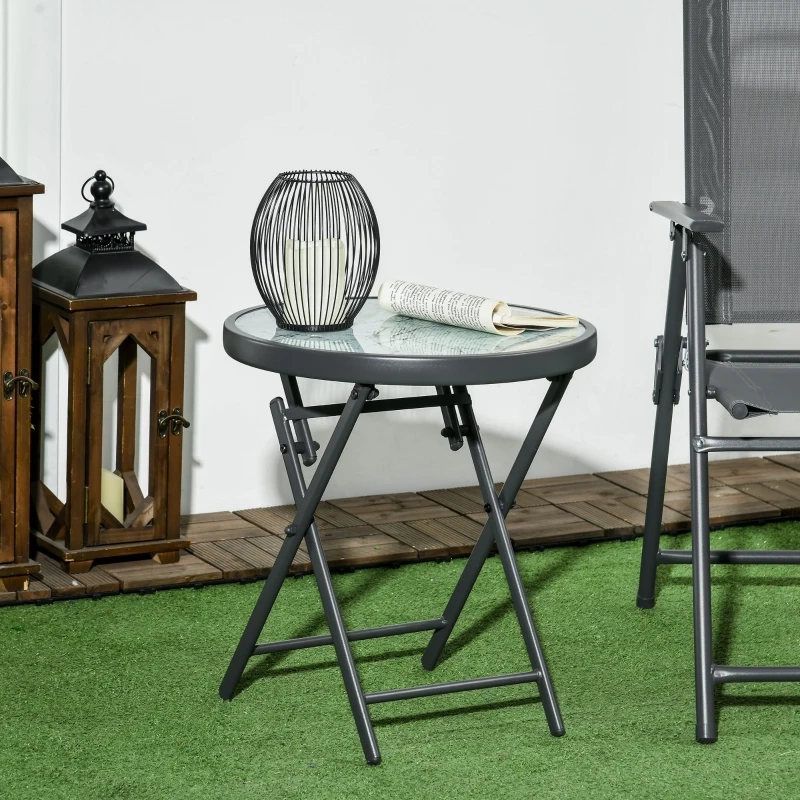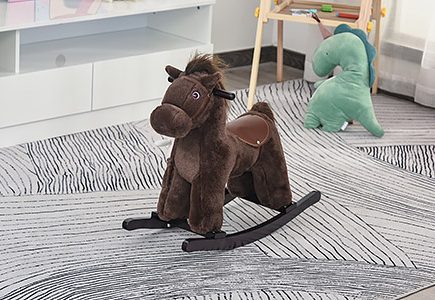Adding a patio umbrella is a great way to create a cozy, shaded retreat in your outdoor space, whether you’re lounging by the pool, dining al fresco, or simply relaxing in the backyard. However, finding the right size is key to maximizing both comfort and style. The proper measurements ensure your umbrella provides ample shade without overwhelming or under-covering your space. A well-sized umbrella enhances the look of your setup, blends seamlessly with your furniture, and keeps everyone comfortably shaded. By understanding key dimensions and taking accurate measurements, you can confidently choose an umbrella that fits perfectly and elevates your entire outdoor experience.

1. Key Considerations Before Measuring Your Patio Umbrella
Before diving into measuring your umbrella, there are a few things to consider that will help you choose the perfect size.
Space Size
Start by measuring your outdoor space. Whether it’s a small balcony, a large poolside area, or a spacious patio, understanding the available space will help guide your decision. A good rule of thumb is to allow enough space for the umbrella without overcrowding your furniture or the overall area.
Shading Needs
Consider the amount of shade you need. If you’re covering a small bistro table, you’ll need a smaller umbrella. But for a larger seating area, a larger umbrella will be necessary to provide sufficient shade for everyone.
Furniture Arrangement
Measure your furniture before selecting an umbrella. For example, if you plan to place the umbrella over a dining table, ensure the umbrella provides at least 2 feet of shade beyond the table’s edges. You don’t want to feel cramped under the umbrella, so ensuring there’s enough coverage is key.
2. How to Measure Patio Umbrella Canopy Size
The most important measurement when it comes to patio umbrellas is the canopy size. The canopy is typically measured by either diameter (for round umbrellas) or width (for square and rectangular umbrellas). Let’s take a closer look at how to measure for each shape:
For Round Umbrellas:

Measure the diameter, which is the distance from one edge of the umbrella to the other, passing through the center. For instance, a 9-foot umbrella will have a canopy that’s 9 feet across. This is perfect for small to medium outdoor setups.
For Square Umbrellas:

For square umbrellas, measure the length of one side. A 7.5-foot square umbrella, for example, will have sides that measure 7.5 feet long. This measurement ensures the umbrella provides even coverage from all sides.
For Rectangular Umbrellas:
When measuring a rectangular umbrella, measure the longest side to get the coverage you need for your space. For larger outdoor dining areas or lounge spaces, rectangular umbrellas provide ample shade across long sections.
3. How Much Shade Do You Need?
After you’ve measured the canopy, it’s important to know how much shade the umbrella will provide. Choosing the right umbrella size based on your space will maximize comfort and usability.
Shade Area and Umbrella Size Guide
| Umbrella Size | Shade Area Coverage | Best For |
| 7’ – 8’ | Up to 36” | Bistro set, small seating area |
| 8’ – 9’ | 48” | 4-person dining set, single chaise |
| 9’ – 10’ | 60”-72” | 4-6 person dining set, small sectional |
| 11’ – 12’ | 84” | 6-8 person dining set, patio conversation set |
| 12’ – 13’ | 96” | 8-10 person dining set, large sectional |

For example, if you have a 4-person dining table, a 15-foot umbrella with Twin Canopy, Extra Large Outdoor Parasol with Crank for Pool would be ideal to provide ample coverage. A 12-foot umbrella would be better for larger tables or multiple seating areas, ensuring everyone is well-shaded.
4. Understanding Pole and Frame Measurements
The pole and frame are critical parts of your umbrella that ensure stability and longevity. It’s important to choose an umbrella with a strong frame that can support the canopy size.
Pole Height and Diameter
Measure from the ground to the top of the pole. Most patio umbrellas range between 7 and 9 feet tall, but adjustable models allow you to change the height depending on your needs. Also, the pole’s diameter is key to ensuring it fits securely into the base.
Frame Material
- Aluminum: Lightweight and rust-resistant, great for small to medium-sized umbrellas.
- Steel: Heavier and more durable, perfect for larger umbrellas or windier areas.
- Wood: Offers a natural look but requires more maintenance.
5. Wind Resistance Features and How They Impact Size
Wind resistance is an important consideration, especially if you live in an area that experiences frequent breezes or gusts. Here’s how wind-resistant features affect your umbrella choice and size:
Why Wind Resistance Matters
When strong winds hit, they can put a lot of stress on your umbrella frame, leading to damage or even tipping over. Wind-resistant features help minimize this risk, ensuring your umbrella stays in place and remains durable over time.
Key Features to Look For
- Vented Canopies: These allow wind to flow through the umbrella rather than pushing against it, reducing stress on the frame and preventing tipping.
- Reinforced Frames: Sturdy, durable frames designed to withstand stronger winds are essential, especially for larger umbrellas.
- Wind-Resistant Technology: Some umbrellas are designed with special wind-locking mechanisms or flexible structures that can withstand gusts more effectively.
How Wind Resistance Affects Size
- Larger Umbrellas: Bigger umbrellas tend to catch more wind, so they require stronger wind-resistant features to stay stable. If you’re opting for a larger size, it’s especially important to ensure the umbrella has wind-resistant features.
- Smaller Umbrellas: While smaller umbrellas may still benefit from wind resistance, they are generally less affected by gusts than larger ones. However, having a vented canopy can still improve durability.

Tip: Umbrella with Wind Protection Strap and Cover, Hanging Umbrella with Crank and Cross Base will be perfect for those who are looking for hassle free enjoyment!
6. How to Choose the Right Base for Your Umbrella
The base plays a crucial role in keeping your umbrella stable and secure, especially when wind comes into play. Here’s what to consider when choosing the right base for your patio umbrella:
Why the Base Matters
The right base ensures that your umbrella stays in place and doesn’t tip over. Without a proper base, your umbrella could be easily blown away or even damaged by wind. The size and weight of the umbrella directly influence the size and weight of the base needed.
Base Weight by Umbrella Size
- Standard 9-Foot Umbrella: A base weighing 30-40 lbs is usually sufficient to provide stability.
- Larger Umbrellas (10-11 feet or more): These may require a heavier base, typically between 50-70 lbs, to keep the umbrella grounded and secure during windy conditions.
Considerations for Offset Umbrellas

If you’re using an offset umbrella (like the Outsunny 9FT Offset Hanging Patio Umbrella), you’ll need a stronger base due to its larger canopy and added flexibility. Offset umbrellas are great for 360-degree rotation and tilting for full sun coverage, but they require a sturdy base to support their weight and movement.
Choosing the Right Base Type
- Weighted Bases: Most common, made of plastic, resin, or metal, and filled with sand or water for stability.
- Anchor Bases: Ideal for larger umbrellas, especially in windy areas, as they can be anchored to the ground for extra support.
- Rolling Bases: These provide mobility and can be a good choice if you plan to move your umbrella around often.
Choosing the right base for your umbrella will ensure that it remains upright and functional throughout the season, even on breezy days.
7. Additional Features to Consider When Measuring Your Umbrella
Modern patio umbrellas often come with additional features that add convenience and flexibility.
Tilt Mechanism
A tilt feature allows you to adjust the umbrella’s angle throughout the day to maintain optimal shade as the sun moves. This is a valuable feature, particularly if you want to adjust coverage easily.
Crank System
A crank system makes opening and closing your umbrella easy and hassle-free. For example, the Outsunny 10’ Deluxe Cantilever Umbrella offers a convenient crank and tilt mechanism to easily adjust the umbrella’s position without any effort.
Rotating 360-Degree Umbrella

If you need to move the shade around, consider a 360-degree rotating umbrella. The Outsunny Fir Wooden Patio Umbrella Square Market Parasol Tilt Mechanism features this function, providing shade at any angle and offering flexible coverage for your outdoor space.
8. Common Mistakes to Avoid When Measuring Your Patio Umbrella
Here are a few mistakes to avoid:
- Underestimating Shade Needs: Always pick an umbrella that extends at least 2 feet beyond your table’s edges for adequate coverage.
- Ignoring Wind Resistance: Ensure your umbrella can withstand local wind conditions, especially if you’re in an exposed area.
- Choosing the Wrong Base: Make sure the base is heavy enough to support your umbrella, particularly for larger models.
9, FAQs
Q1: How do I ensure my umbrella provides enough shade for my table and seating area?
Measure the table’s width and length, then choose an umbrella that extends at least 2 feet beyond the edges. For larger seating areas, opt for an umbrella with a larger diameter to ensure full coverage for the table and surrounding chairs.
Q2: Can I use a smaller umbrella for a large seating area?
While possible, it’s not recommended as a smaller umbrella won’t provide enough coverage. A larger umbrella is necessary to ensure that the entire seating area is shaded, keeping everyone comfortable.
Q3: How do I choose the right base for my umbrella?
Select a base that’s heavy enough to secure the umbrella and prevent tipping. A 30-40 lbs base works for smaller umbrellas, while larger ones may require a base of 50-70 lbs, depending on the umbrella’s size and wind conditions.
Q4: How can I stop my umbrella from tipping over in windy conditions?
Ensure the umbrella base is heavy enough for the umbrella size. Consider adding sandbags or weights to the base for extra stability. If possible, always close the umbrella during windy conditions to prevent damage.
Q5: What size umbrella is ideal for a patio or balcony?
For a small patio or balcony, a 6-8 ft umbrella is usually sufficient. For larger areas, consider a 9-11 ft umbrella to provide more shade and cover the entire space effectively. Make sure to check the space and desired coverage before choosing the size.














